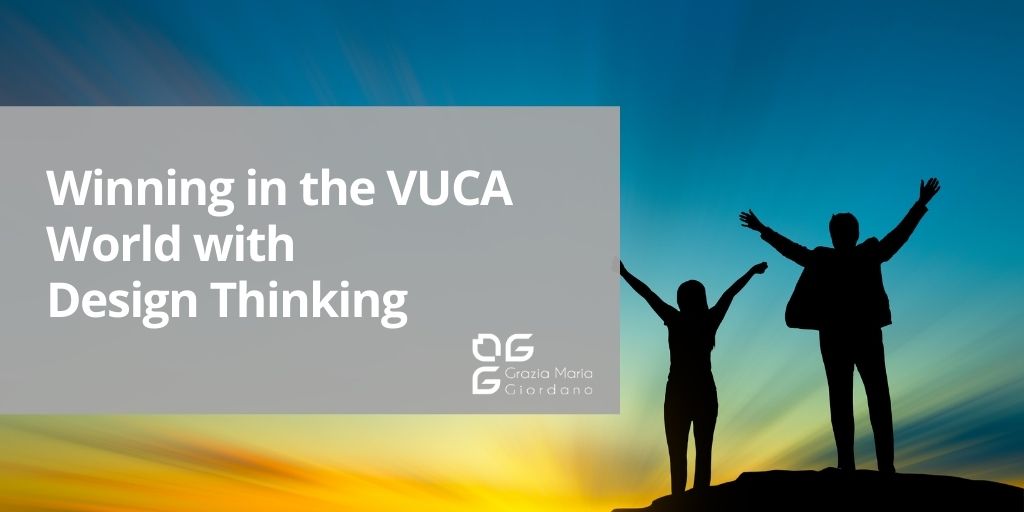One thing that last year has confirmed to us: the world around us is moving at an ever-greater speed. It is a world in constant change in which unpredictable events happen at ever closer rates over time. It is a VUCA world!
The covid-19 pandemic is the latest in chronological order of these unpredictable events. And if in the past, other epidemics have hit more or less extensive areas of the planet (SARS, MERS, avian & swine), it is clear how the Covid-19 pandemic has changed the rules of the game!
According to many, thanks to climate change, climatic and geological events are increasingly numerous and with an ever more strong impact. Just think of the hurricanes that, with ever-increasing violence, hit the Caribbean islands every year and the other unusual events such as the frost in Texas in spring 2021.
The changes generated in Nature, have equally corresponding changes of human origin. Among the changes induced by man, technological changes certainly catch the eye.
New technologies emerge in short time intervals, with significant impact also at the level of business models and at a more macro level with effects on entire economies.
Competition is becoming increasingly global, and companies (in every country) have to deal with this fluid situation.
The VUCA acronym was coined in the United States in the ‘80s, and it defines a world that is (V)olatile, (U)ncertain, (C) omplex – and (A)mbiguous.
It seems to be a very fitting definition.
Analyzing the definition of VUCA, we find that:
(V)olatile: refers to the Nature and dynamics of changes. The higher the volatility, the faster the changes
(U)ncertain: it is connected to the inability to understand what is happening, which makes it impossible to predict with certainty what will happen in the future
(C)omplex – Complex: looks at the number of factors to be considered and the relationships between these factors. The more the factors are interconnected, the more the situation becomes complex and therefore more difficult to analyze
(A)mbiguous: refers to the lack of clarity of a phenomenon. The situation is blurred, the information is incomplete and/or contradictory
It seems to me that the individual elements of the definition of VUCA perfectly describe today’s world!
The VUCA world, therefore, poses unexpected challenges to people, companies, and organizations.
So how can people, companies and organizations not only survive but also thrive in the VUCA world?
Read on to find out!
The new challenges of the VUCA world
VUCA world creates new challenges for people, companies, national and international organizations, and entire governments.
These challenges have some characteristics in common:
- There is no history: Many have never occurred before and cannot be traced back to categories that have been previously managed. They are unique situations in which we do not have a historical point of reference to help us find a way to deal with them. They didn’t come with an instruction booklet like Ikea furniture!
- They are ambiguous and elusive: It is complicated, if not impossible, to understand why things are happening the way they are and what causes this behaviour. And every attempt to look at the problem from different points of view changes the understanding of the problem itself and the underlying mental scheme. There is no single point of view, no single frame of reference.
- They are complex and with many ramifications: These are very complex situations in which many elements combine in a new and never experienced way. Most of the time have profound ramifications which are not always clear how they play out. The change of a single variable in one point of the system causes changes in other parts of the system whose a priori evaluation is very complicated and whose medium/long-term effects are difficult to predict.
- Many interests are involved: These are very “democratic” situations that affect entirely different social groups equally. But the interests of these groups are sometimes very in contradiction with each other. And this makes finding a solution extremely complex with traditional tools.
- There are no solutions that are (entirely) right or wrong. The answers may work or not, and no formula allows us to understand this beforehand. And in many cases, there is not even an objective criterion to measure the success of a solution.
These challenges are often referred to as Wicked Problems because of their unique, complex, ambiguous, and contradictory characteristics.
And to give a practical example, we cannot fail to mention the pandemic which, as highlighted at the beginning, is the latest in terms of time and perhaps the most impactful in recent times among these Wicked Problems.
Just think of the contradictory information that emerged in the early days of the pandemic. Or to the entirely different approaches that the national governments have identified to navigate the pandemic itself.
Just think of the different interests to be satisfied. School is a textbook example of this.
On the one hand, there is the interest of children in education and social life.
On the other hand, parents wish to see the educational and social needs of their children satisfied, and to be able to work worry free from home.
Finally, there are the interests of teachers (sometimes parents too) who have managed to navigate the difficulties faced with distance learning.
In this context, traditional problem-solving tools that rely on the benchmark and look to the past are essentially useless! They do not help in any way solving a Wicked Problem.
Probably you also noticed how those methods and tools used until now in the business environment proved to be inadequate in navigating these situations. Companies have suffered, finding themselves unprepared for an unknown situation without finding a solution by looking at the past.
VUCA world makes the problem-solving methods usually used in business and non-business contexts practically ineffective.
So what can help people and companies in this context?
Today we need a method that allows people and companies to navigate these complex problems, looking at the world with ever-new eyes, without relying on what happened in the past (which is not so helpful) and allows us to overcome the prejudices and constraints of traditional knowledge.
There is a method that has all these characteristics: Design Thinking
But what is Design Thinking?
Let’s find out together!
Design Thinking to tackle the Wicked Problems of VUCA world
Design Thinking is also referred to as Human-centered Design. I have already presented possible applications and benefits of its application in defining corporate policies and the procurement of services. These are just some of its applications, which will be the subject of a dedicated blog soon.
In the rest of this blog, I would like to tell you more about what Design Thinking is and how it can help you face and win the challenges of the VUCA world.
Design Thinking is a problem-solving method that applies the mindset, process and design tools to solve challenges in English.
Talking about Design in Italy is not an easy challenge!
I think it’s one of the most overused words. We are used to associating the concept of design with beauty, haute couture garments, high-level furniture, and objects with a more futuristic and original “design”. We are used to associating the word design with the aesthetic aspect of something, ignoring the mindset and the process that led to that result.
If we looked more closely at the dictionary, we would find out the word design is more comprehensive in meaning and includes the aesthetics of something. Still, also it works on how to make the object of the design perfectly functional and able to satisfy the need of the user. In the design world, form follows function!
And what do those who practice Design Thinking design then?
The Designer designs products, services, physical and/or digital experiences, strategies, processes, new business models using the mindset, process and tools of Design.
The professions related to Design are several. It starts with Graphic & Visual Designers who are more focused on the aesthetic aspect, to go towards Interaction Designers and UX Designers who deal with digital design (web, app, etc ..). Experience & Service Designers, on the other hand, design the experience (physical and digital) for the user of a particular service or the actual service that this person will use. Finally, the Business Designers design business strategies and business models! Yes, you can design those too!
All these professionals use Design and Design Thinking which is the ideal method to tackle the Wicked Problems of the VUCA world because of the method:
- Starts from the needs of the people that must be satisfied at that moment and in that context. The story, what happened in the past is not relevant
- Considers all points of view, involving the various stakeholders. The different perspectives are brought together to create a shared vision of the problem and then find a solution that satisfies all the interests involved
- It has a flexible process, and it allows the conversation to proceed productively, without getting it blocked. You always move forward, but you can go back if necessary.
- Aims to validate a solution quickly in an iterative process, to gain new knowledge and further refine the solution
Design Thinking, therefore, overcomes the limits of traditional problem-solving methods to find new, original and practical solutions to the challenges of the VUCA world.
Do you also have a challenge that you don’t know how to solve? Design Thinking can help you!
Contact me to talk about it!






